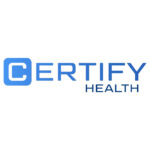Efficiency and accuracy are not just operational goals — they’re essential for delivering high-quality patient care. Yet, many hospitals continue to face workflow challenges caused by fragmented systems, manual processes, and lack of real-time data visibility. These workflow gaps often lead to delays, miscommunication, administrative overload, and ultimately, compromised patient experiences.
The solution lies in digital integration — bringing together disparate hospital systems, processes, and data into a unified ecosystem. When properly implemented, digital integration transforms hospital operations, enabling seamless communication, smarter decision-making, and better patient outcomes.
Here are five ways modern hospitals can eliminate workflow gaps through digital integration.
1. Streamline Administrative Processes with Automated Workflows
Administrative inefficiencies are among the biggest bottlenecks in hospital operations. Manual tasks like scheduling, billing, and data entry not only consume time but also increase the risk of errors and miscommunication.
By integrating digital tools across departments, hospitals can automate routine administrative workflows such as patient registration, insurance verification, appointment reminders, and discharge summaries.
For example, once a patient’s appointment is booked online, the system can automatically verify insurance details, update the physician’s schedule, and send a confirmation to the patient — all without manual intervention.
Automation ensures that every department works with accurate and updated information, reducing redundant tasks and minimizing human error. As a result, hospitals experience faster processing times, improved staff productivity, and enhanced patient satisfaction.
2. Enable Seamless Data Exchange Across Departments
One of the major causes of workflow inefficiency in hospitals is data fragmentation. Patient information often resides in multiple systems — EHRs, billing software, lab databases, and radiology platforms — that do not communicate with each other.
A digitally integrated hospital bridges these silos by enabling interoperability between different software systems. When data flows freely across departments, physicians can access real-time patient information — including medical history, lab results, and treatment plans — without switching between platforms.
For example, when a lab test result is ready, it can automatically be added to the patient’s electronic record, instantly notifying the physician and care team. This saves time, reduces delays in diagnosis, and ensures continuity of care.
Ultimately, digital integration helps hospitals move away from disconnected systems toward a single source of truth, where all stakeholders can make informed decisions quickly and accurately.
3. Improve Communication and Coordination Among Care Teams
Effective communication between healthcare professionals is vital for patient safety and quality care. However, many hospitals still rely on outdated communication methods like phone calls or physical notes, which can lead to information loss or delayed responses.
A unified digital communication platform enables secure, real-time collaboration among physicians, nurses, and administrative staff. Care teams can instantly share updates, patient information, or test results within a centralized digital environment — improving coordination and reducing clinical errors.
For instance, digital alerts can notify physicians of critical lab values or changes in patient conditions, ensuring immediate attention. Similarly, nurses can update the care plan digitally, allowing all team members to stay aligned.
When communication flows seamlessly, decision-making becomes faster, patient care becomes safer, and workflows become more efficient.
4. Integrate Patient Engagement Tools for a Connected Experience
Patient engagement plays a crucial role in eliminating workflow gaps, especially when it comes to check-ins, feedback collection, and post-care follow-ups.
By integrating patient engagement solutions such as self-service kiosks, patient portals, and mobile applications, hospitals can reduce the administrative burden on staff and empower patients to manage their own care journey.
For example:
-
Patients can check in digitally without waiting in queues.
-
Automated surveys can collect feedback after discharge.
-
Mobile apps can send reminders for medications or follow-up visits.
This level of digital integration not only improves patient experience but also creates smoother operational flows, as staff spend less time managing paperwork and more time focusing on clinical care.
Hospitals that prioritize patient-centered digital tools can reduce bottlenecks at every stage — from admission to discharge — while maintaining accuracy and efficiency.
5. Leverage Data Analytics for Continuous Improvement
Digital integration generates a wealth of data that hospitals can use to monitor performance and identify inefficiencies. Advanced analytics tools can track metrics such as average patient wait times, bed occupancy rates, billing turnaround times, and staff productivity.
By analyzing these insights, hospital administrators can pinpoint workflow gaps and take proactive measures to improve them.
For example:
-
If the data shows consistent delays in lab result processing, the system can suggest automation or resource reallocation.
-
If appointment cancellations are high, predictive analytics can identify patterns and trigger reminders to reduce no-shows.
Data-driven insights help hospitals transition from reactive management to proactive improvement, leading to more agile, efficient, and adaptive operations.
The Bigger Picture: A Unified Digital Hospital Ecosystem
When hospitals adopt digital integration, they move beyond isolated systems and create a connected, intelligent ecosystem. This holistic approach not only improves efficiency but also enhances transparency, accountability, and patient trust.
Integrated platforms like CertifyHealth’s Unified Healthcare Platform exemplify this transformation — connecting every touchpoint of the patient journey while ensuring interoperability between hospital departments. The result is better coordination, improved data accuracy, and a superior patient experience.
Conclusion
In today’s data-driven healthcare landscape, eliminating workflow gaps is not just about saving time — it’s about improving the quality, safety, and consistency of care. Through digital integration, hospitals can achieve streamlined operations, enhanced communication, and better patient outcomes.
By automating processes, enabling interoperability, improving communication, engaging patients digitally, and leveraging analytics, hospitals can finally operate as cohesive, patient-centric systems.
The future of healthcare belongs to hospitals that are digitally integrated, data-driven, and experience-focused — because seamless workflows lead to seamless care.

